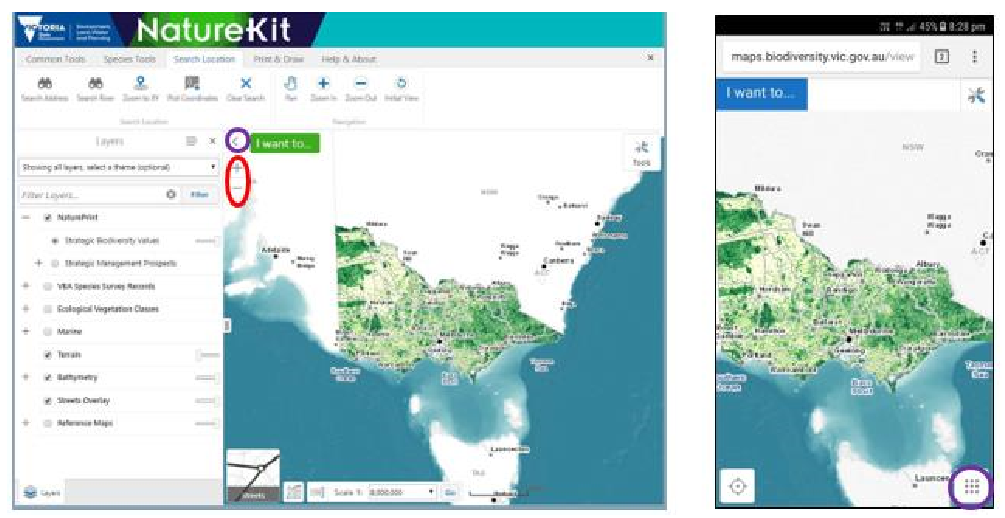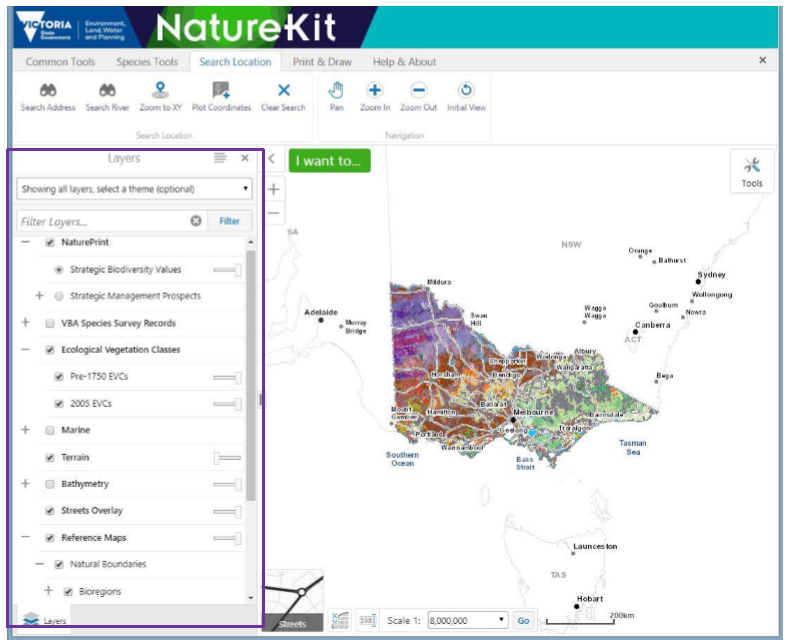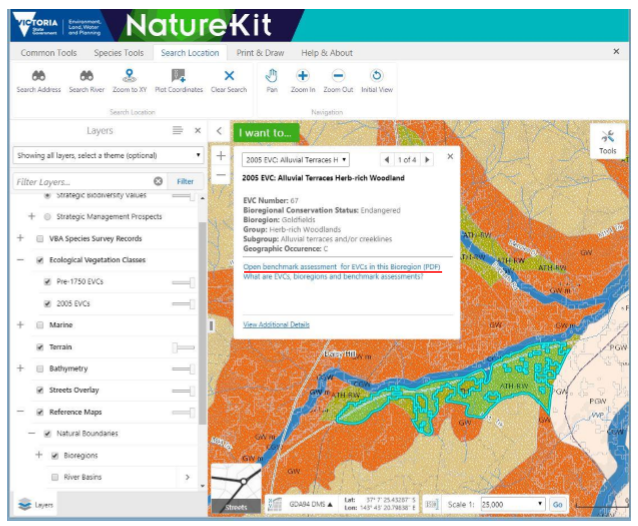Choosing a species
TreeProject supplies locally sourced indigenous seedlings grown by trained volunteers. You will need to select the provenance-based indigenous seedlings you would like grown.
If you are unsure of which species are suitable for your area, we recommend that you seek advice from your local Landcare group or council. Landcare groups typically have a list of species suitable for your region.
You can also try the NatureKit tool or VicMap Vegetation to identify species that are indigenous to your property or region.
If you are unsure of what species to choose or would like assistance navigating the online tools, call TreeProject on 03 9650 9477 or email us at [email protected] to request assistance.
Identify your bioregion and ecological vegetation class
Bioregions are a landscape-scale approach to classifying the environment using a range of attributes such as climate, geomorphology, geology, soils and vegetation. There are 28 bioregions identified in Victoria. Within each bioregion are a number of EVCs.
Ecological Vegetation Classes (EVC) are the standard unit for classifying vegetation types in Victoria. The EVC benchmarks contain a subset of “typical” but not comprehensive lists of species for each EVC in a bioregion.
- Open Nature Kit. Take a minute to read the page including the Frequently Asked Questions.
- Scroll to and click on the ‘Launch NatureKit’ button. Note the layers menu/button (circled purple) and zoom buttons (circled red).
If you are using a mobile device i.e. Android or iOS (iPhone or iPad) open the layers menu. Mobile devices also have a geolocation button with ‘Find Me’ function.
- Select and deselect boxes as below including Ecological Vegetation Classes and Bioregions. (In addition, ‘Administrative Boundaries’ allows you to select and view regions and boundaries options such as DELWP, CMA, and Landcare).
- Zoom to your location using the zoom and/or cursor and scroll functions.
- Click on your location. A highlighted EVC area and details of the site will appear. Note the Bioregion and EVCs. Pre-1750 EVC mapping is a model of the assumed pre- European settlement vegetation types of Victoria, 2005 is a present-day model.
- Click on ‘Open benchmark assessment for EVCs in this Bioregion (PDF)’. Scroll to the relevant EVC benchmark for the site and download or print.
The DEWLP website also has a page with the full list of bioregions and EVC benchmarks.
Make sure to assess your on-site landscape, and to contact your local experts for further information, see Landcare Gateway and other links on our Resources page.
How to read an EVC description sheet
An Ecological Vegetation Class (or EVC) sheet provides a guide for users to determine what vegetation and other environmental characteristics are to be expected at a site. The EVC provides ‘benchmarks’ relating to tree size, type of species, number of species and so on to help users assess their site against these benchmarks, and from this to determine the overall quality of that site.
- Description: Crucial to your decision as to whether the EVC is appropriate to your planting site. If the EVC is listed as a complex EVC, this means the landscape has many landscape changes in one area. You will need to look at surrounding EVC lists to determine the landscape description that fits your particular area.
- #/ha: This is the number of large trees per hectare that can be expected at high-quality sites. This provides a guide as to the ideal number of large trees at your site.
- Tree Canopy Cover: These are the species you might find in the canopy layer (the uppermost layer of vegetation) at your site. These can be ideal tree species to plant at your site. This field will also tell you how much of the site you should cover with these species.
- % Cover of Life Forms: These are the proportions of different ‘life forms ’expected at the site. This section may be helpful if you are trying to decide on the proportion of trees, shrubs, grasses and so on to order for your understory. Herbs are plants without woody material, and graminoids are grasses, lilies, orchids and similar.
- #SPP of Life Forms: This indicates how many species would belong to each life form at a high-quality site. The life form type ‘Immature Canopy Tree’ will always be blank since this information is given under the ‘Tree Canopy Cover’ section.
- Species typical of at least part of EVC range: These are the species that you can expect to find at a high-quality site. They are a fantastic indication of which species you should order for your site. It is likely you will find that some of these are already present.
More information
You can also seek advice from:
- your local Catchment Management Authority or regional Landcare facilitators
- Yarra Ranges Local Plant Communities (if you live in the Yarra Ranges)
- Goulburn Broken CMA Revegetation Guide (if you live in the Goulburn Broken CMA)
- “Seed Collection of Australian Native Plants” by Ralph Murray. Contact TreeProject to purchase a copy for $35.00 + postage.

 If you are using a mobile device i.e. Android or iOS (iPhone or iPad) open the layers menu. Mobile devices also have a geolocation button with ‘Find Me’ function.
If you are using a mobile device i.e. Android or iOS (iPhone or iPad) open the layers menu. Mobile devices also have a geolocation button with ‘Find Me’ function.
